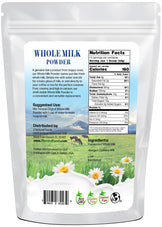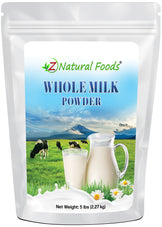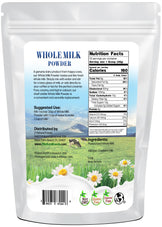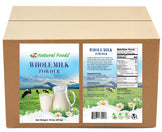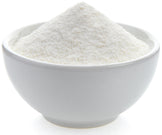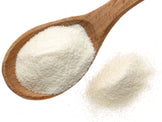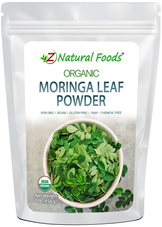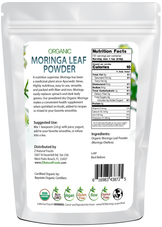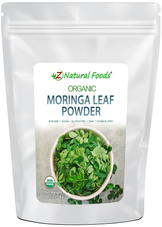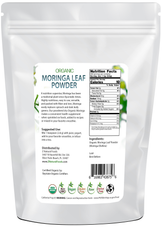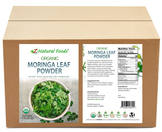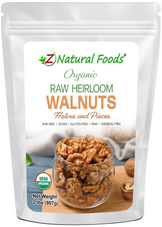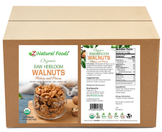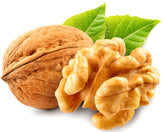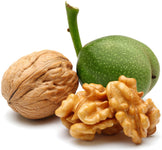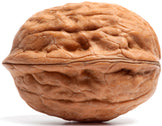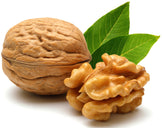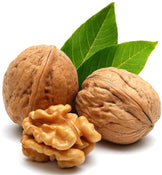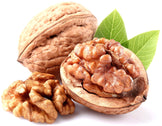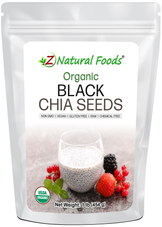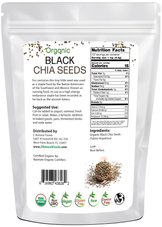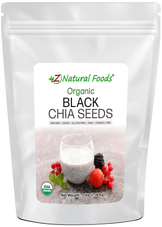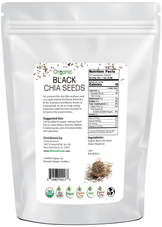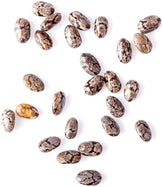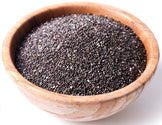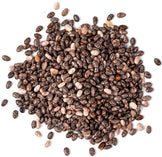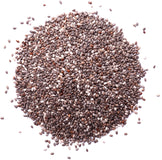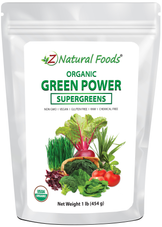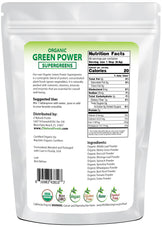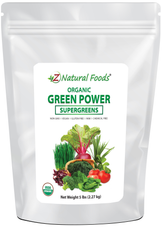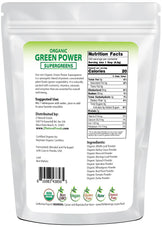Description
Description
Today’s article is the second installment of our diet vs. lifestyle comparison series.
We will delve into the differences between the scientifically proven Mediterranean lifestyle and the pescatarian diet.
The Mediterranean lifestyle, a cornerstone of our discussion, shares many similarities with the pescatarian diet. However, the unique benefits of the Mediterranean lifestyle truly set it apart.
As we get started, here is an excellent article about the Mediterranean lifestyle:
The Mediterranean Diet (Lifestyle) vs The Pescatarian Diet: The Difference
Before we proceed, let's understand the distinction between diet and lifestyle and how the Mediterranean lifestyle can empower you to make informed health choices.
Lifestyle vs Fad Diets: The True Indicator of Success
In some of our recent articles discussing the Mediterranean lifestyle, you may have noticed that we rarely use the term “Diet.” We at Z Natural Foods do not like the word diet because they lack all the essential qualities needed to achieve a goal. You can lie to yourself all you want, but diets have no proof regarding overall long-term success in maintaining a healthy body weight and improving health markers.
Furthermore, an equally crucial proven fact is that short-term fad diets NEVER contribute to better health. Living a lifestyle that requires compliance and consistency always gets you to the winner's podium. We continue to mention these very critical points because if you learn one thing from this series of articles, it should be the value of the intrinsic details of lifestyle over diet.
A few critical elements to the success of any lifestyle are the unwavering commitment to the quality and freshness of the ingredients used and the balance between work and leisure time. Incorporating lifestyle habits like going home for lunch, taking a siesta, and lots of movement is equally important. This dedication ensures you always consume the best, most nutritious foods and faithfully live this lifestyle, providing balance and reassurance in your health choices.
Unfortunately, fad diets are popular because the fast-paced Western lifestyle often leaves us feeling like we have so little time to create delicious meals and maintain a healthy work/play balance.
However, the “I don’t have the time” excuse is just that- an excuse. Look at how many hours you spend in the fake world of social media, which provides no benefit to your well-being (As more research emerges, we are learning how bad social media really is for our health). You have all the time you need; it is simply a matter of how you use your time. Technology has streamlined our ability to acquire quality raw ingredients worldwide, so there are no more excuses. So, please look in your bag of excuses and note that it is now empty.
Being adaptable and incorporating tools to help you stay compliant is never wrong. Remember, your commitment to compliance is the key to your health journey, and this dedication will keep you motivated and on track. While we believe that functional superfoods, in various forms, offer a convenient way to support nutrient intake, and their versatility allows for endless culinary creations, they should not be a substitute for a fresh homemade meal made with quality ingredients and love. Instead, they can be added to support and strengthen the nourishing aspects of your chosen lifestyle. They are a powerful tool in your quest for a healthier lifestyle, allowing you to adapt and control your health journey.
As we review the Mediterranean Diet vs the Pescatarian Diet, here is an excellent article discussing the differences between the Mediterranean Diet and the Ketogenic Diet:
The Pescatarian Diet
In the simplest of terms, the pescatarian food plan is a vegetarian diet that includes seafood and whole, full-fat dairy foods.
Some people even say it is a subset of a plant-based diet.
The general consensus is that a plant-based diet must contain a minimum of 80% plant foods. However, there doesn’t seem to be a specific percentage of plant-based foods required for the pescatarian diet.
In fact, this diet focuses as much on the concept of not eating meat for ethical reasons.
If done correctly, the pescatarian diet can be a highly nourishing and satisfying eating plan that provides a wide range of polyphenolic compounds and essential fatty acids from saturated and unsaturated food sources.
A Wide Range of Nourishing Fats: The backbone of the Pescatarian Diet
There are two primary types of fats: saturated and unsaturated. Structurally speaking, saturated fats have no double bonds, whereas unsaturated fats have one or more of these bonds. A fat with one double bond is considered monounsaturated, whereas if it has more than one, it is polyunsaturated. Polyunsaturated fats are broken down into two classes: Omega-3 and 6 fatty acids. However, EPA and DHA are long-chain omega-3 polyunsaturated fatty acids abundant in fish and shellfish. An important point to understand is that while specific foods may be higher in a particular type of fat, all foods contain a mixture of saturated, mono, and polyunsaturated fats.
Nuts and seeds are a significant player in the pescatarian diet and contain most of their calories from fat, making them energy-dense, high-calorie foods.
Go here to browse our Nuts & Seeds category of products.
Consuming a wide range of nuts and seeds (like flax, chia, walnuts, pistachios, and almonds) ensures you get a nourishing amount of polyunsaturated fatty acids, the most abundant one being omega-6 linoleic acid.
However, around 12% of walnuts' and up to 50% of flax seeds' fatty acid profile comes from the Omega-3 fatty acid Alpha linoleic acid (ALA), making them a well-balanced fatty acid food.
The following was stated in a study discussing dietary ALA's effects on reducing the cardiovascular risk factors of inflammation and lipid profile imbalances in hypercholesterolemic men and women:
- Alpha-linolenic acid (ALA) reduces cardiovascular disease (CVD) risk, possibly by favorably changing vascular inflammation and endothelial dysfunction.
- Inflammatory markers and lipids and lipoproteins were assessed in hypercholesterolemic subjects (n = 23) fed two diets low in saturated fat and cholesterol and high in PUFA varying in ALA (ALA Diet) and linoleic acid (LA Diet) compared with an average American diet (AAD).
- The ALA Diet provided 17% energy from PUFA (10.5% LA; 6.5% ALA); the LA Diet provided 16.4% energy from PUFA (12.6% LA; 3.6% ALA); and the AAD provided 8.7% energy from PUFA (7.7% LA; 0.8% ALA).
- The ALA Diet decreased C-reactive protein (CRP, P < 0.01), whereas the LA Diet tended to decrease CRP (P = 0.08).
- Although the two high-PUFA diets similarly decreased intercellular cell adhesion molecule-1 vs. AAD (-19.1% by the ALA Diet, P < 0.01; -11.0% by the LA Diet, P < 0.01), the ALA Diet decreased vascular cell adhesion molecule-1 (VCAM-1, -15.6% vs. -3.1%, P < 0.01) and E-selectin (-14.6% vs. -8.1%, P < 0.01) more than the LA Diet.
- Changes in CRP and VCAM-1 were inversely associated with changes in serum eicosapentaenoic acid (EPA) (r = -0.496, P = 0.016; r = -0.418, P = 0.047) or EPA plus docosapentaenoic acid (r = -0.409, P = 0.053; r = -0.357, P = 0.091) after subjects consumed the ALA Diet.
- The two high-PUFA diets decreased serum total cholesterol, LDL cholesterol, and triglycerides similarly (P < 0.05); the ALA Diet decreased HDL cholesterol and apolipoprotein AI compared with the AAD (P < 0.05).
Therefore, it was concluded that “ALA appears to decrease CVD risk by inhibiting vascular inflammation and endothelial activation beyond its lipid-lowering effects.”
Fatty acids from whole dairy foods
Some primary protein and fat sources in the pescatarian diet are whole, full-fat dairy and eggs.
For a long time, it has been believed that all fats are created equal and that your dietary intake should be minimal to be healthy. Well, modern-day science and research have entirely debunked this theory.
What we know as an indisputable fact is that all nourishing food-based fats have wonderfully unique qualities that may support optimal well-being and longevity when consumed in a balanced manner. Nutritious fats are necessary for a quality diet for various reasons, such as supporting healthy, balanced hormones and brain and heart health. They are also a nourishing source of essential fat-soluble vitamins (A, D, & K).
Diets low in nutritious fats have been linked to vitamin deficiencies, hair loss, weakened immune response, and a host of other issues.
The fats contained in whole dairy foods are shown to be highly complex and provide the body with great nourishment. Although milk fat is often not consumed as an isolated food, it has been given a bad wrap. As more food science emerges, we understand the wide range of components contained in milk, like essential vitamins, minerals, high-quality protein, and a wide range of fatty acids; therefore, how these fats in milk function in the body takes on a new meaning.
According to a review titled Composition, structure, and absorption of milk lipids: a source of energy, fat-soluble nutrients, and bioactive molecules, “Milkfat is not only a source of bioactive lipid components, but it also serves as an important delivery medium for nutrients, including the fat-soluble vitamins. Bioactive lipids in milk include triacylglycerides, diacylglycerides, saturated and polyunsaturated fatty acids, and phospholipids.”
“Among the 12 major milk fatty acids, only three (lauric, myristic, and palmitic) have been associated with raising total cholesterol levels in plasma, but their individual effects are variable-both towards raising low-density lipoproteins and raising the level of beneficial high-density lipoproteins. The cholesterol-modifying response of individuals to consuming saturated fats is also variable.” Therefore, milkfat's composition, functions, and biological properties will need to be re-evaluated as the food marketplace moves increasingly towards more personalized diets.
The breakdown of fatty acids in whole milk:
- 62% Saturated
- 30% Monounsaturated
- 4% Polyunsaturated
Go here for more information about our Whole Milk Powder:
In our opinion, the most significant pitfalls of the pescatarian diet are as follows:
- The complete exclusion of meat and the claim that it causes inflammation while ignoring the incredible nutrient density red meat provides. No other food on earth offers a complex mixture of nutrients like collagen, coenzyme Q10, carnosine, L-carnitine, creatine, B12, and heme-iron, just to name a few.
- The majority of articles and studies on this diet don’t discuss the value of the quality of your food choices. Like so many diets, it is about what to avoid and not about the value of what you consume.
Why tradition, quality, and the correct ingredients matter
A critical point to understand regarding the Mediterranean lifestyle is that quality ingredients and tradition are never compromised. The following was stated in a comparative study looking at the effects of cooking with olive versus sunflower oil on the antioxidant activity of tomatoes:
- Consumption of tomato products with olive oil significantly raised the plasma antioxidant activity (FRAP) from 930 +/- 150 to 1118 +/- 184 micromol/l, p <.01), but no effect was observed when the sunflower oil was used.
- The change (supplementation minus start values) in FRAP following the consumption of tomato products with oil was significantly higher for olive oil (190 +/- 101) than for sunflower oil (-9.6 +/- 99, p <. 005).
Therefore, it was concluded that “the study results show that consumption of tomato products with olive oil but not with sunflower oil improves the antioxidant activity of the plasma.
The Mediterranean lifestyle has some intrinsic differences based on geographic location.
For example, areas closer to the ocean eat more seafood, whereas those more inland eat more meat. However, there is a list of foods that all versions of the Mediterranean lifestyle consider essential for daily consumption.
These include red wine, olive oil, coffee, nuts/seeds, local herbal tea and honey, dark chocolate, fresh full-fat dairy, and produce, all of which are often locally grown and produced.
It is no secret that consistency and compliance with all aspects of the MED lifestyle are most important for producing optimal results.
However, what makes the MED lifestyle superior to the pescatarian diet is that it is a lifestyle with easily sustainable habits proven in studies to produce long-term sustainable results showing consistent improvement of health markers and maintaining healthy body weight.
In fact, the longer you are compliant, the better your results.
In conclusion, once again, the MED lifestyle reigns supreme over the pescatarian diet.
While the two have many similarities, the MED lifestyle wins by a nose (as they say in horse racing) based on intrinsic factors like quality of food and lifestyle choices. Please stay tuned, as next week, we will compare the MED lifestyle to the SAD (standard American diet) diet.
For two more excellent articles about the Mediterranean lifestyle, visit these two articles:
Top 5 Most Important Superfoods for your Mediterranean Lifestyle
Why walnuts are the best nut in the Mediterranean Diet
To review our excellent Proteins and Collagen products, go here:




